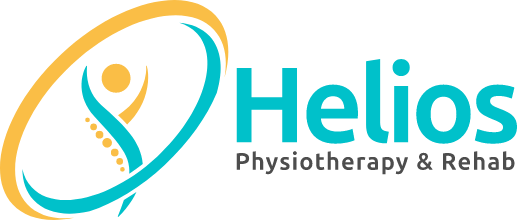
- Did you fall on your Tail Bone (Coccyx)?
- Do you have pain in tailbone pain when you sit or stand up from a chair?
- Do you experience tailbone pain (coccydynia) since you delivered your baby?
- Our a Physiotherapist who has Special interest in Pelvic Therapy can HELP YOU OUT.
What is Coccydynia or Tail Bone Pain?
Coccydynia is a medical condition characterized by pain in the coccyx, which is the small triangular bone at the bottom of the spine. The pain can be dull or sharp and may be worsened by sitting or pressure on the area.
CAUSES
- Coccydynia:, or pain in the coccyx or tailbone area, can be caused by a variety of factors, including:
- Trauma: A fall or blow to the coccyx can cause coccydynia. Childbirth is also a common cause of coccyx injury.
- Degenerative changes: Degenerative changes in the coccyx or surrounding area, such as arthritis or disc degeneration, can cause coccydynia.
- Poor posture: Sitting for long periods of time, especially on hard surfaces, can put pressure on the coccyx and cause pain.
- Tension in the pelvic floor muscles: Tension or spasm in the muscles of the pelvic floor, which attach to the coccyx, can cause pain.
- Infection: In rare cases, infections of the coccyx or surrounding area can cause coccydynia.
- Abnormalities in the coccyx: Abnormalities in the coccyx, such as a dislocated or fractured coccyx, can cause coccydynia.
- Idiopathic: In some cases, no specific cause for coccydynia can be identified, and the pain is referred to as idiopathic coccydynia.
- SYMPTOMS:
Coccydynia can cause a range of symptoms, including:
- Pain in the tailbone area: The most common symptom of coccydynia is pain in the coccyx or tailbone area, which can be dull or sharp and may worsen with sitting, standing up from a sitting position, or pressure on the area.
- Discomfort during bowel movements: Coccydynia can cause discomfort or pain during bowel movements.
- Pain during sexual intercourse: Coccydynia can also cause pain during sexual intercourse.
- Numbness or tingling: In some cases, coccydynia can cause numbness or tingling in the tailbone area or down the legs.
- Pain when bending or twisting: Pain may be worse when bending or twisting the spine.
- Pain when standing from a seated position: Pain may also be experienced when standing up from a seated position.
- Tenderness or swelling near the tailbone and surrounding area or Rectum: The coccyx area may be tender or swollen to the touch.
- Pressure near Rectum or Tailbone area: The coccyx area may feel like pressure kind of sensation.
- TREATMENT OPTIONS
Coccyx pelvic therapy is a type of physical therapy that focuses on the treatment of coccydynia. This type of therapy may also be referred to as coccydynia therapy, tailbone therapy, or pelvic floor physical therapy.
- Coccyx Joint Mobilization involves the application of manual pressure to the coccyx in a controlled manner to help alleviate pain and stiffness in the area.
- Coccyx Soft Tissue Mobilization techniques involve the use of hands-on techniques to manipulate the muscles and tissues around the coccyx, pelvis, and surrounding areas. During the procedure, the therapist will apply pressure to the coccyx while the patient is side lying. The pressure may be direct or indirect, and the therapist will use different techniques to mobilize the coccyx. The goal of coccyx mobilization is to improve mobility, decrease pain, and reduce inflammation in the area.
- Coccyx Trigger Point Release therapy is a type of manual therapy that focuses on relieving pain and tension in Pelvic Floor Muscle Trigger points. Trigger points are areas of tightness and tenderness in the muscles that can cause pain and restrict motion. The pressure applied to the trigger point helps to relax the muscle fibers and improve circulation to the area, which can help reduce pain and inflammation.
- Exercises may include stretches and strengthening exercises for the pelvic floor muscles, as well as exercises to improve posture and alignment.
- Acupuncture may be a potential treatment option for pain in the coccyx or tailbone area. Acupuncture may help to relieve pain and inflammation by stimulating the release of endorphins, the body’s natural pain-relieving chemicals, and increasing blood flow to the affected area. Acupuncture helps to relieve tension and promote relaxation, which can be beneficial for individuals with coccydynia.
- Modalities such as Laser Therapy, Heat may also be used to reduce pain and inflammation.
Coccyx pelvic therapy can be extremely effective for people with coccydynia. Your Pelvic physiotherapist will work with you to develop a personalized treatment plan based on your individual needs and goals. With the right treatment and support, you can improve your pelvic health and regain your quality of life.
Don’t let Tail Bone pain or dysfunction hold you back any longer. Contact us today to learn more about our pelvic therapy services and start your journey to better Pelvic Health!
